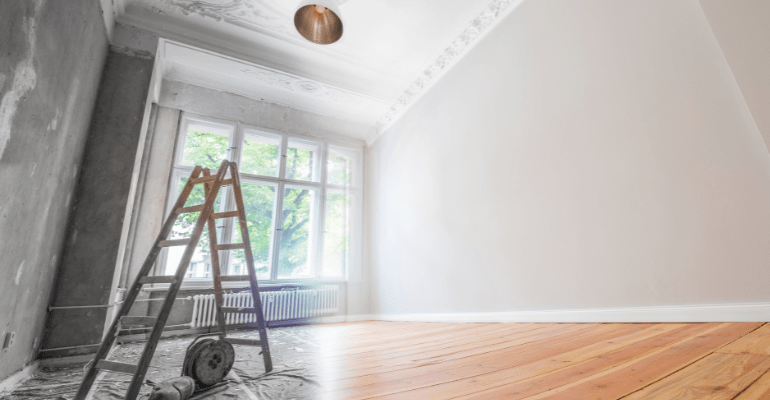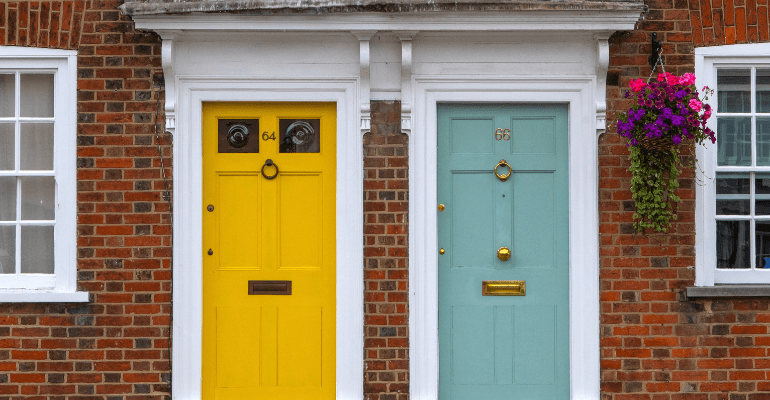
Flipping the script: The investor strategy that could help you sell your home.
Do these scenarios sound familiar?
You’re thinking of putting your current house on the market, but the professional valuation has come back way below what you expected. Didn’t your neighbour’s house just sell for way more?
Or you’re getting the viewings, but your potential buyers are left underwhelmed when they walk through your front door, leaving without putting down an offer.
If you’re struggling to sell your home in 2025, you’re not the only one. Latest research suggests that it can take an average of 205 days to go from putting your property up for sale to finally completing, with the time it takes to get an initial offer increasing.
In this blog, we’ll explore how using the ‘flipping’ tactic employed by property professionals could add value and help you give your property the ‘Wow’ factor it needs to stand out in a buyer’s market.
What is ‘flipping’?
If you’re a fan of property programs like Homes Under the Hammer or The Great House Giveaway, the chances are that you’ll have seen the flipping strategy in action.
Flipping is when an investor buys a house with potential (at below the market value compared to similar properties in the area) and renovates it. This could be as simple as modernising the décor or as extensive as loft conversions and changing the layout. The aim is to add more value to the property than the cost of the upgrades, allowing the property professional to sell the house on again for a profit.
The improvements can also help to increase the attractiveness of the property to potential buyers, helping to sell quicker.
How can homeowners use the flipping strategy?
You already have the asset (your home) and you already know that it needs a bit of work to get it ready to sell for the right price. All you need now is:
Some forward planning
Depending on the scale of the improvements, renovations can take anywhere from a couple of weeks for minor changes to between 3 months and a year for more extensive improvements (such as extensions or structural changes). Being able to manage the timescales and costs is really important to make sure the project remains on track.
You should view the project as an investment that will pay off in four to six months’ time rather than a quick fix.
A good team of skilled labourers
Although there are jobs that you could (and should) do yourself, you’ll definitely need to find skilled and reliable tradespeople to do the tasks you can’t. This could include general builders and specialist trades such as electricians and plumbers.
Property investors know that having the right team in place can greatly speed up the renovation process so they’ll conduct research before hiring and will reuse trustworthy people on future projects. They will also ask for recommendations from other tradespeople, friends and family.
Improvements that cost-effectively add value
You should focus on upgrades that increase market appeal without overspending. These can often depend on the property itself and the local area so research what buyers are looking for in your area.
For example:
-
Adding an extra bedroom in an area close to schools could make the property more attractive to growing families and increase the property value.
-
Installing solar panels or other energy efficiency upgrades (such as double glazing, insulation and new boilers) can appeal to the eco-friendly and economically conscious home buyer.
-
Restoring period features in older houses can add character and personality, making the property stand out in a crowded market (if completed sympathetically in line with the style and era).
The right finance solution
As you’ve not sold your house yet, the chances are that you won’t have all the cash you need to finance the renovation yourself.
That’s where a short term bridging loan could help, giving you up to 12 months to repay the loan in one lump sum once the newly renovated property is sold.
Depending on the amount that you need, you could even get a bridging loan that allows you to buy your new home and refurbish your old property, allowing you to move quicker (and not live in a building site).
Ready to flip the script?
At Together, we’ve helped thousands of professional investors and homeowners unlock the potential in their properties.
Talk to our team and find out how our short term bridging loans could help you achieve your property ambitions and move faster.
Get in touchLove this blog? Here’s more you might like
-

Bridging loans: 9 ways short-term finance gets you from A to Buy
7 minPersonalBusinessIntermediariesBridging Loan -

From A to Buy: Ten frequently asked bridging finance questions
6 minPersonalBusinessIntermediariesBridging Loan -

Splitting a property into two dwellings
2 minBusinessBridging LoanBuy to Let
Any property, including your home, may be repossessed if you do not keep up repayments on your mortgage.
All lending decisions are based on lending criteria and, where applicable, subject to credit check and an assessment of individual circumstances.
All mortgages are subject to our terms and conditions.
Loans offered by Together Commercial Finance Limited are not regulated by the Financial Conduct Authority.
Articles on our website are designed to be useful for our customers, and potential customers. A variety of different topics are covered, touching on legal, taxation, financial, and practical issues. However, we offer no warranty or assurance that the content is accurate in all respects, and you should not therefore act in reliance on any of the information presented here. We would always recommend that you consult with qualified professionals with specific knowledge of your circumstances before proceeding (for example: a solicitor, surveyor or accountant, as the case may be).

